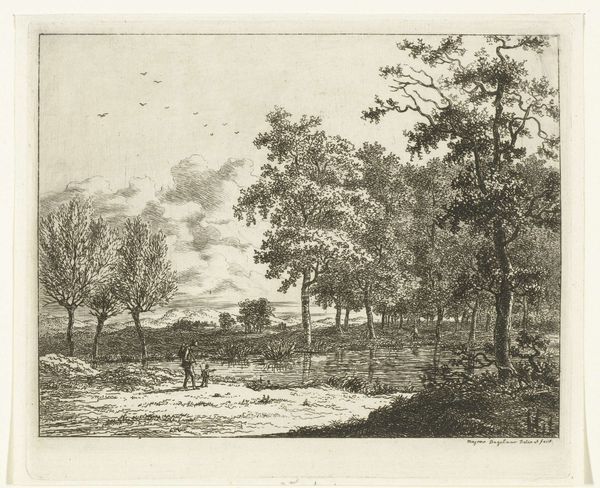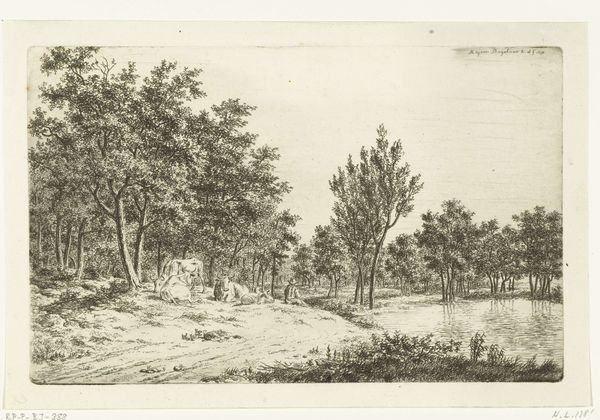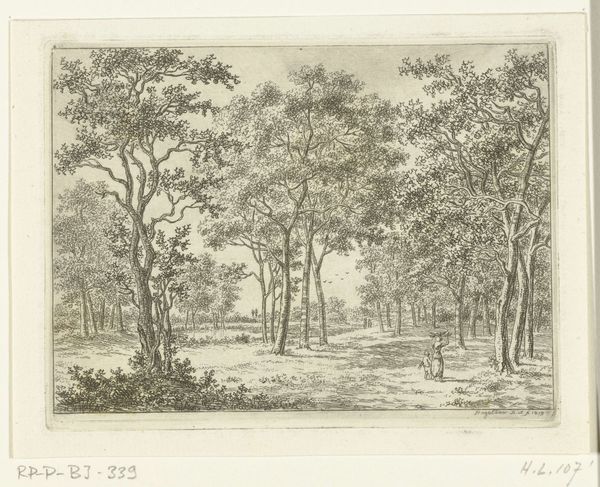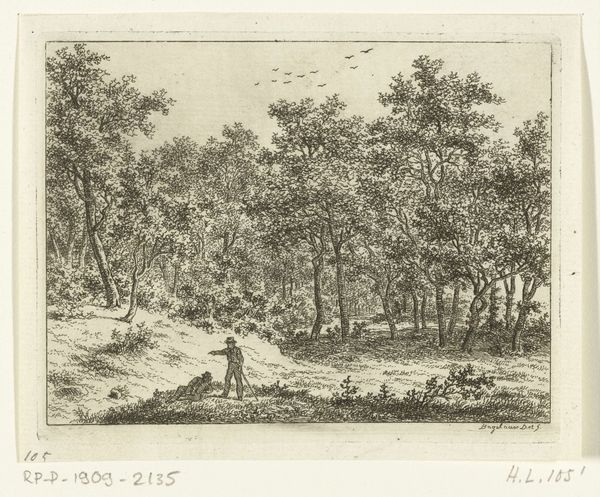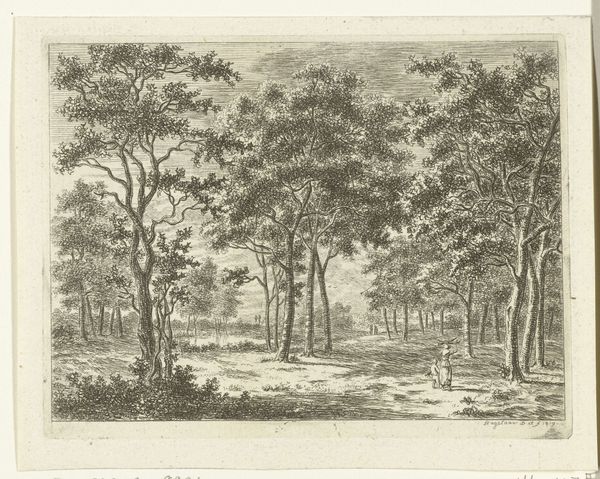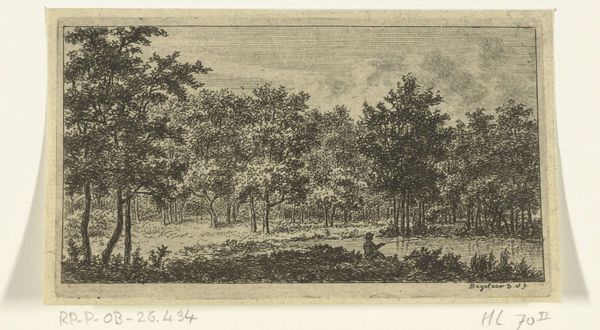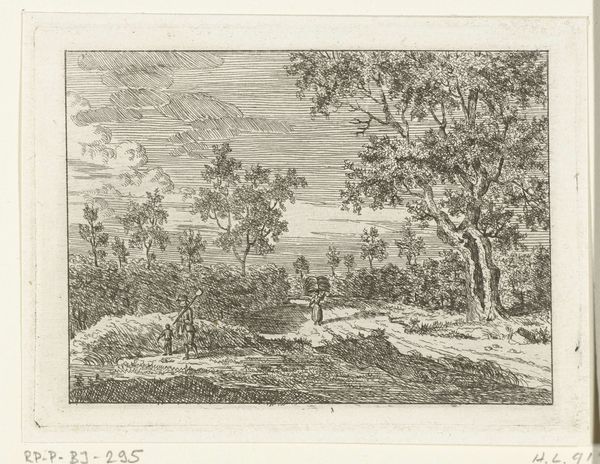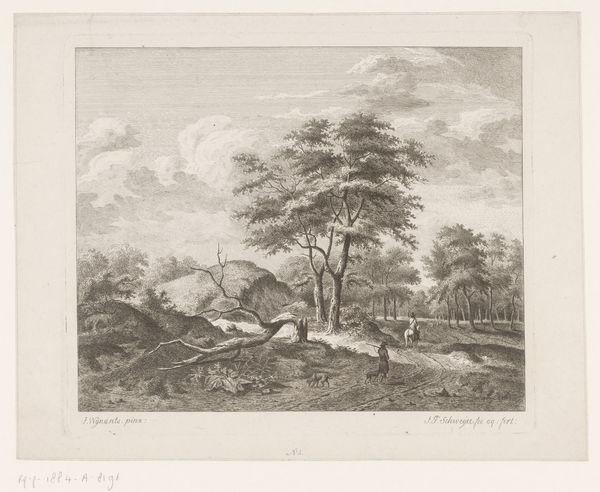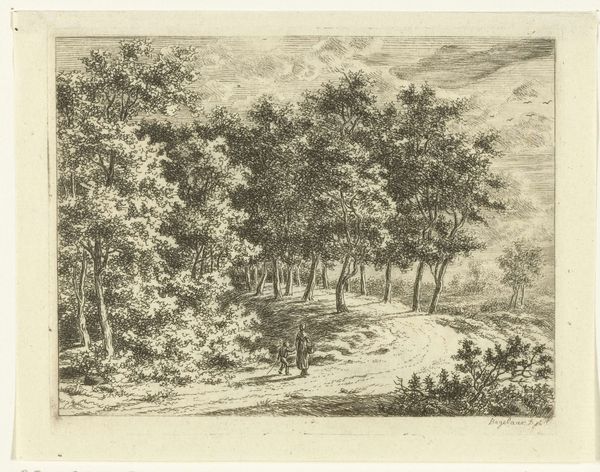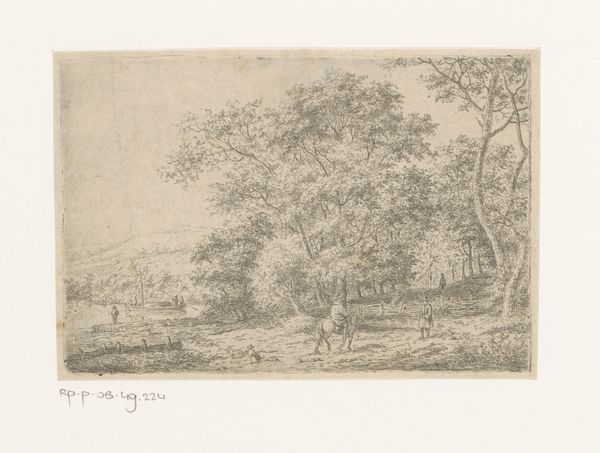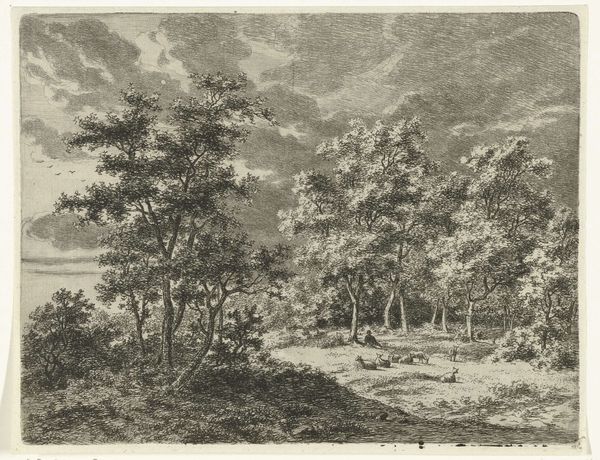
drawing, print, etching
#
drawing
#
aged paper
#
toned paper
#
light pencil work
#
parchment
# print
#
etching
#
pencil sketch
#
old engraving style
#
landscape
#
personal sketchbook
#
romanticism
#
pen-ink sketch
#
pen and pencil
#
pen work
Dimensions: height 96 mm, width 122 mm
Copyright: Rijks Museum: Open Domain
Curator: I'm immediately struck by the sheer level of detail achieved with what looks like simple etching techniques. It's incredibly delicate. Editor: Indeed. What we have here is an etching by Ernst Willem Jan Bagelaar, made around 1819. The piece is titled "Weiland met een koe en twee schapen," which translates to "Pasture with a cow and two sheep." Curator: The use of line and the rendering of light are quite effective in conveying a sense of bucolic tranquility. The density of the foliage contrasting with the open sky—it’s well balanced. Editor: The rise of landscape art in the Romantic era spoke volumes about shifting cultural values. Rural life became idealized as a refuge from industrializing cities. Bagelaar captures that sentiment effectively, appealing to an increasingly urban audience. Curator: I appreciate how the artist's focus on texture provides the scene with depth and vitality. The layered lines used to depict the leaves and the clouds especially draw my eye. It suggests careful, considered craftsmanship. Editor: Consider, too, that works like this played a significant role in constructing ideas about national identity. Images of the Dutch landscape were vital in promoting a sense of shared history and belonging. Bagelaar's intimate portrayals fostered a sense of pride. Curator: That contextual understanding is essential, but I find myself returning to the composition itself. The way he’s managed to create spatial depth using only variations in line thickness and density is skillful, don't you think? Editor: Absolutely. It serves as a potent reminder of the social and cultural functions art can serve, regardless of technical accomplishments. This work speaks volumes, even with the simplicity of its materials and methods. Curator: A thought-provoking work, on all fronts. Editor: Agreed, there's plenty here to hold our interest.
Comments
No comments
Be the first to comment and join the conversation on the ultimate creative platform.
